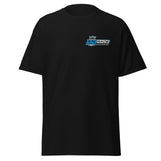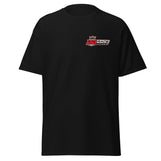For those venturing into the world of motorsports or even seasoned racers looking for a new thrill, there's a specific category of racing that's rapidly gaining momentum across the globe: Micro Sprint Racing. But what exactly is a Micro Sprint? Let's dive into the intricacies and excitement of this dynamic racing class.
Defining the Micro Sprint
At first glance, a Micro Sprint might seem like a scaled-down version of its full-sized sprint car counterpart. And in many ways, it is. Boasting side-mounted 600cc motorcycle engines, these compact speed demons can produce a staggering 160+ horsepower. Their design, echoing that of larger sprint cars or midgets, allows for an authentic racing experience, but on a smaller scale.
The Track and Specs
Micro Sprints shine brightest on dirt tracks, primarily those that measure up to a fifth of a mile. Yet, their versatility is such that they occasionally grace larger tracks too. The choice between winged and wingless versions provides an added layer of strategy and preference for racers.
- Track Type: Predominantly Circle/Oval, Banked
- Surface: Primarily Dirt/Clay; sometimes Asphalt
- Appearance: Open Cockpit, Open Wheel with a signature downtube roll cage resembling a Sprint Car
- Drive System: Chain Drive
- Fuel: Most commonly Methanol Alcohol
- Engine: Mainly 600cc 4-Stroke motorcycle engines. However, variations include 270cc 2-Stroke, 125cc 2-Stroke, and other types.
- Weight: With the driver onboard, between 750-800 pounds. The car itself varies from 520-650 pounds depending on customization.
Classes within Micro Sprint Racing
Determined by engine size (cc's) and the presence or absence of wings, various classes exist within the realm of Micro Sprint Racing:
- 600cc Sprints: The most sought-after class, emphasizing power and precision.
- 270 Sprints & 125 Sprints: Different power categories for varied racing experiences.
- Stock Engine (A-Class): Engines come directly off the motorcycle without alterations.
- Open/Outlaw Class: A more liberal category, allowing engine modifications up to 640cc.
- Restrictor Class: Geared towards beginners, this class places a 35mm restrictor on stock engines. Entrants can be as young as 10 years old.
Where the Rubber Meets the Dirt
To truly appreciate Micro Sprint Racing, witnessing it is essential. Numerous tracks across the USA, Canada, and even as far as Australia host these exhilarating races. Each track has its unique regulations, so it's paramount to research specific rules around age, chassis, and engine specifications.
Engines, Speed, and Prestige
A dominant feature of the 600cc class is the mandatory 4-cylinder, 4-stroke motorcycle production engine. Turbochargers and superchargers are notably absent to maintain an even playing field. On larger tracks, these tiny titans can touch 100 mph, while on a 1/6 to 1/4 mile track, they average around 70-85 mph.
Prestigious races often offer lucrative payouts, but the thrill of winning and the associated accolades can outweigh financial incentives. Races like the Tulsa Shootout or the Highbanks Hustle have become legendary in the Micro Sprint community.
Is Micro Sprint Racing For You?
Many renowned racers, including the likes of Kyle Larson, Hailie Deegan, and Christopher Bell, have taken to Micro Sprints either as a foundational stepping stone or to refine their skills. The class provides an affordable yet challenging platform for budding racers.
Before jumping in, prospective racers should immerse themselves in the environment. Purchasing pit passes, engaging with seasoned racers, and perhaps even joining a crew can offer invaluable insights. After all, in the world of racing, experience is the best teacher.

















